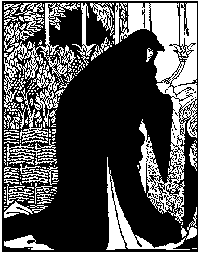Lecture II. Images of Women in Literature
page 3
Another way to view
the Images of Women Chart
Not only do these images fit into a set of category
types of classical myth, folklore, and even contemporary movies, they tend
to inform many of the female characters we encounter in literature.
One explanation for this phenomenon is that MOST characters in literature
are "minor" characters, and, as such, they are usually created in a
kind of "shorthand" by the author. Thus, even male
characters follow the stereotypes of "the rich man," "a
soldier," "the bridegroom," "the young boy,"
and so forth. But, since female characters are rarely the
"main" characters of male-authored books, we find that the
gender-typing is more restrictive.
let's take another look
at the chart as we will continue to compile it--
|
Good!!! |
Not-so-Good |
  

The Earth Mother:
Earth mother types occur
frequently in mother characters in literature. One of the best
is "Ma Joad" in Steinbeck's The Grapes of Wrath.
They are characterized by great
courage, love for all people, forbearance, fertility, and abundance.
|
 
 
The Hearth-Keeper:
The hearth-keeper may
be a mother or grandmother, or she may be represented as a manager or
provider. A good example of hearth-keeper is Pilate in Toni
Morrison's Song of Solomon..
Hearth-keepers are
characterized by maturity, wisdom of experience, and resourcefulness. |
 
The Goodwyfe:
We can recognize the Good Wyfe by
many of her characteristics. She is pliable, cheerful, pretty,
self-effacing. Chaucer's "The Wyfe of Bath" is
considered a "realistic" portrait because she does not
exhibit these qualities.
She rarely figures as a major
character.
|
   
The Hag:
Never a shortage of hags, witches,
and crazy ladies. The Madwoman in the Attic was a standard of
Victorian fiction--Charlotte Bronte's creation of Rochester's wife in Jane
Eyre was only one of many. Sylvia Plath's young character, Esther,
in The Bell Jar shows the kind of variation that can come from
a closer investigation of a type.
Characterized by ugliness, old age,
poverty, strange beliefs or practices, instability. |

The Nun:
Soliary, gentle, usually
powerless. Naive. Holy. A modern writer, Anita
Brookner, has written several books about modern spinsters who
actually qualify as nuns in their behavior (my favorite is Hotel du
Lac).
|

The Spinster: Spinsters
were always minor characters in male-authored novels. They were
powerless and rarely influenced plots in any significant way.
Women writers, however, gave the spinster a prominent role in many
novels. Jane Eyre is the prototype here, even though she gets
her man at the end.
A spinster is first characterized by
her marital status - but she is almost always plain and mousy, thin,
humorless, intelligent, and thrifty. This is to be kind to the
oft-maligned class of women without men!! |
  
The Queen:
a good Witch, Glenda
or resigned Hera
|
 
The Wicked Queen:
In addition to Hecate and Guinevere (by some accounts), we have Lady
Macbeth, of course. In more recent novels, Queens have not figured very
heavily, but we can find the equivalent in characters from TV shows like
Dallas. |

The Governess:
|
The Governess: |
|
    
The Mother:
from Sumeria
Byzantium
or Suburbia |
The Stepmother: |
   
The Virgin and
Variations:
It is interesting to note,
first, the relationship between the Goddesses of Wisdom and their
Fathers--always the Father's favorite. Also, the Virgin in
mortal women is a fragile state, and the plot often revolves around
the deflowering, Ophelia, etc.
|
   
The Temptress:
Women show up most often as the villain
in literature in the guise of the Temptress. From Eve to
Salome to Helen of Troy, and ever onward, woman is dangerous in that
way. |

The Servant Girl: Cinderella
|

The Poor Girl:
|
   
The Girl:
Reubens'
Three Graces
or
The Bride |
 
The Huntress:
Artemis
or Diana
|
   
The Beauty:
Venus
Aphrodite
|
   
The Medusa:
|
As we proceed with
the class, we are going to keep this chart handy to associate characters we
encounter in our reading with the perennial stereotypes that we have
examined here. You can use this list of Character Stereotypes for your
assignment for your Research Project. Which of these categories fits
your writer? In what ways is your author forced into a cliché because
she is a woman writer?
Return to
Women in Literature
|

















































